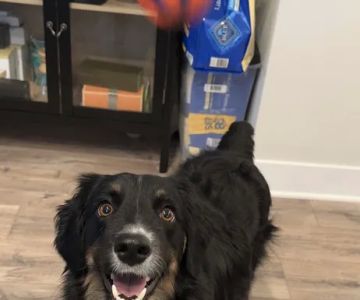Helping Your Pet Overcome Fear-Based Behavior: Effective Solutions
As a pet owner, one of the most heart-wrenching things you might face is seeing your beloved companion struggle with fear-based behaviors. Whether it's a dog cowering at the sound of thunder or a cat hiding from unfamiliar guests, these fearful reactions can severely affect your pet's quality of life. In my journey as a pet owner, I’ve learned a lot about how to help my pets overcome their fear. Let’s dive into some effective solutions and practical tips that have worked for both me and countless other pet owners.
1. Understanding Fear-Based Behavior in Pets
The first step in overcoming fear-based behavior is understanding what causes it. Just like humans, pets can experience a wide range of emotions, including fear. When a pet is afraid, it might react by trembling, hiding, barking excessively, or even becoming aggressive. These behaviors are often triggered by specific stimuli, such as loud noises, unfamiliar environments, or even certain people.
For example, I noticed that my dog, Max, would tremble uncontrollably whenever we went to the vet. It was obvious that he was terrified of the entire experience, not just the vet himself. Understanding that his behavior wasn’t intentional helped me approach the problem more compassionately. He wasn’t misbehaving; he was genuinely frightened.
2. The Power of Positive Reinforcement
Positive reinforcement is one of the most effective techniques to help your pet overcome fear. Instead of scolding or punishing your pet when they display fear-based behaviors, reward them when they display calmness or bravery in situations that usually trigger their fear.
Take my cat, Luna, as an example. She used to be terrified of the vacuum cleaner. The mere sight of it would send her running under the bed. To help her, I began by rewarding her with treats and affection when she stayed in the room with the vacuum cleaner running, even if she was just sitting quietly and observing from a distance. Over time, she began to associate the vacuum with positive experiences, and her fear gradually decreased.
3. Gradual Desensitization
Gradual desensitization is a technique that involves slowly exposing your pet to the fear-inducing stimulus in small, manageable doses. This helps them get used to the trigger without feeling overwhelmed. It’s important to go at your pet’s pace and never force them to face their fears before they are ready.
When I first adopted Max, his fear of thunderstorms was extreme. We started by playing recordings of thunder at a low volume while providing him with his favorite toys and treats. Over several weeks, I gradually increased the volume until he was able to remain calm during a storm. This process took time, but it made a world of difference in his ability to handle his fear.
4. Creating a Safe Space
Every pet needs a sanctuary—a place where they can retreat to feel safe and secure. This is especially important for pets that experience fear and anxiety. A designated safe space can be a crate, a quiet room, or even a cozy corner with their bed and favorite blanket. By providing your pet with a retreat, you allow them to take control of their environment when they feel overwhelmed.
Max, for instance, loves his crate. I outfitted it with soft bedding and a few chew toys. Whenever he felt scared or anxious, he would retreat to his crate, and I noticed that he was more relaxed when he had that option available. It became his personal "safe haven," helping him cope with anxiety-inducing situations.
5. The Importance of Routine and Stability
Pets thrive on routine. A predictable schedule can help reduce anxiety and make your pet feel more secure. Whether it’s feeding times, walks, or playtime, sticking to a regular routine gives your pet a sense of control and comfort.
When Luna’s anxiety started affecting her behavior, I made it a point to follow a consistent schedule. I fed her at the same time every day, and our play sessions became more predictable. This stability helped alleviate some of her fears, as she knew what to expect next.
6. Using Calming Aids and Supplements
If your pet's anxiety is severe, there are several calming aids and supplements available to help manage their stress. These include natural remedies like pheromone diffusers, calming collars, and anxiety-reducing treats. While these aids are not a substitute for behavior training, they can provide much-needed relief for your pet.
For example, I used an Adaptil diffuser for Max during storm season. The pheromones released from the diffuser helped create a calming environment in our home, reducing his anxiety. Similarly, Luna benefitted from some calming treats that helped her feel more at ease when guests arrived.
7. Consulting a Professional
Sometimes, fear-based behavior can be particularly difficult to manage on your own. If your pet's fear is extreme or if they are becoming aggressive, it may be time to consult with a professional behaviorist or a veterinarian. These experts can assess your pet's behavior and provide tailored solutions or therapies, such as behavior modification techniques or medication if needed.
In my case, Max's fear of thunderstorms was so intense that I reached out to a veterinary behaviorist. After assessing his behavior, the specialist recommended a combination of behavior modification and anti-anxiety medication, which significantly helped Max cope with his fear.
8. Patience is Key
It’s important to remember that overcoming fear-based behavior is a gradual process. Patience, consistency, and understanding are essential. Every pet is unique, and progress may take time. Celebrate small victories along the way, and never give up on helping your pet feel safe and secure.
Watching my pets overcome their fears has been incredibly rewarding. It’s a journey that requires commitment, but the bond it creates between you and your pet is priceless. By using positive reinforcement, gradual desensitization, and providing a safe and stable environment, you can help your pet become more confident and less fearful in the face of their anxieties.












